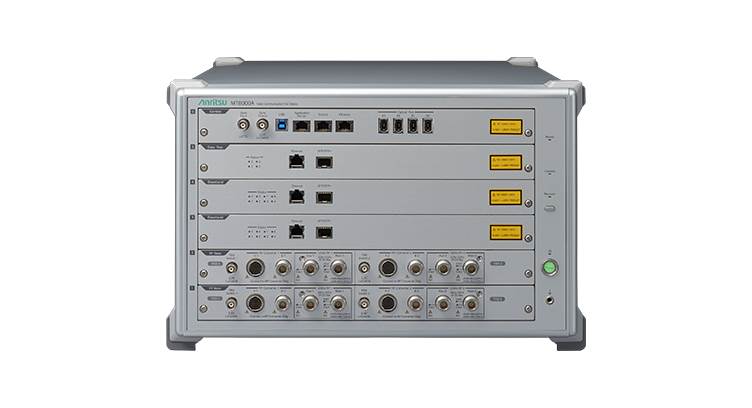Anritsu Company introduces the MT8000A 5G Entry Model, a single-instrument solution that supports the necessary fundamental RF measurements on 4G LTE and 5G mobile devices in a cost- and time-efficient manner.
The 5G Entry Model is a one-box solution that conducts Frequency Range 1 (FR1) Sub-6 GHz and Frequency Range 2 (FR2) millimeter wave (mmWave) measurements, as well as a convenient upgrade path to provide UE repair facilities economic benefits while occupying a smaller footprint.
With the MT8000A 5G Entry Model, basic RF testing of UE wireless device performance can be conducted. The introduction of the single-instrument test station supports the market need to provide sufficient wireless test functions for advanced smart devices at low cost.
Leading third-party logistics (3PL) organizations have selected the MT8000A platform for 5G device verification due to its cost and performance advantages. The test solution produces stable and repeatable measurements that increase test result confidence. Stable measurements also improve reporting to respective device manufacturers and mobile operators. Device repair facilities experience economic benefits, as the MT8000A can produce faster test times compared to competitive solutions, which increases device test throughput and lowers cost-of-test per device.
The MT8000A 5G Entry Model has a low initial price, as well as a simple upgrade path to a mid-range test set when advanced test capabilities and functionality are needed. The ease and affordability of enhancement further create a lower total cost of ownership.
The 5G Entry Model expands the Radio Communication Test Station MT8000A family. The series also includes an all-in-one 5G device test platform that supports RF and protocol testing, functional and application operation testing, beam characteristics testing, and more. It supports Non-Standalone (NSA) and Standalone (SA) mode base station simulation functions for development of 5G chipsets and terminals, as well as FR1 and FR2, to support all the main frequencies used by 5G services.




















